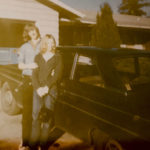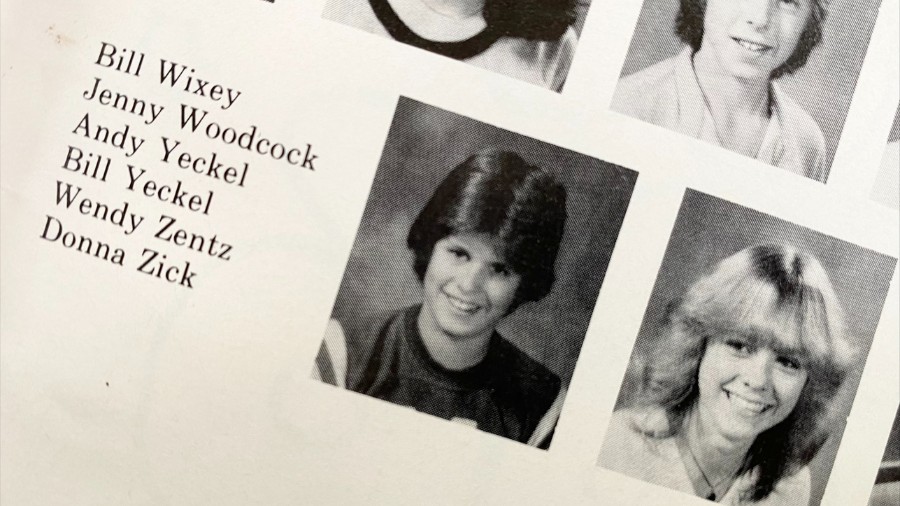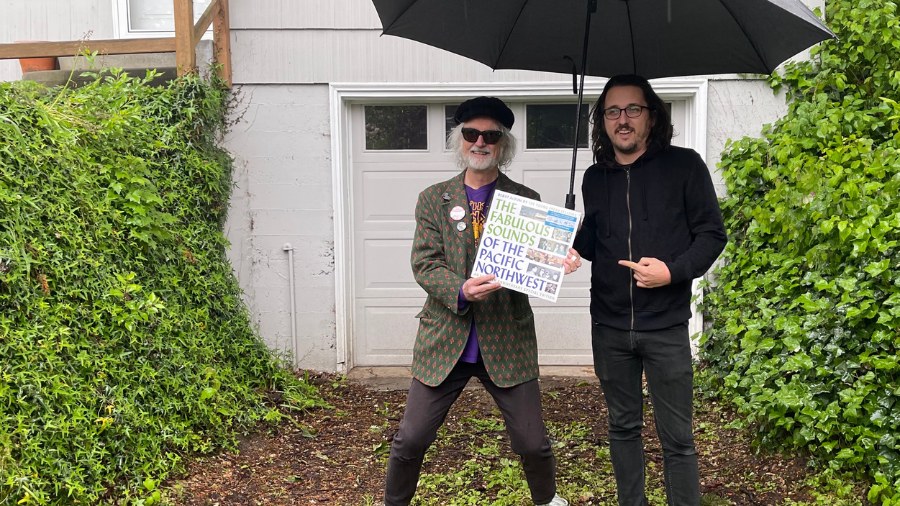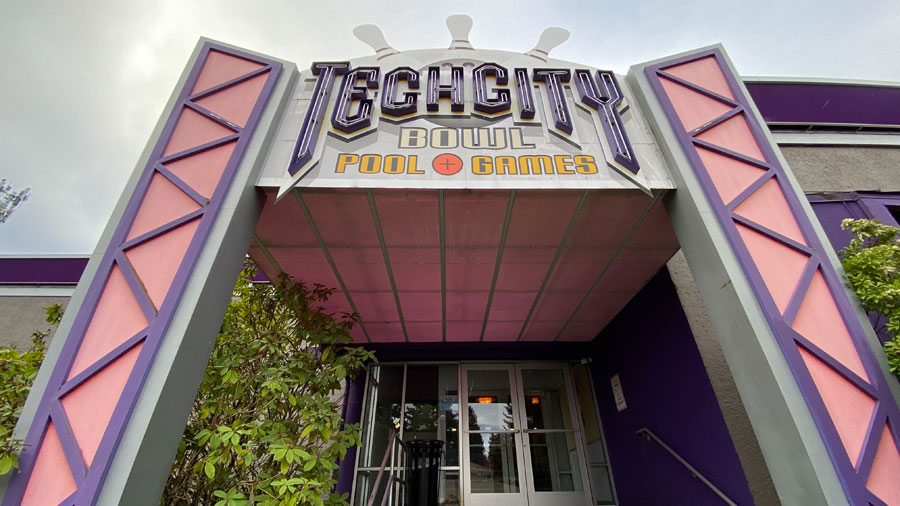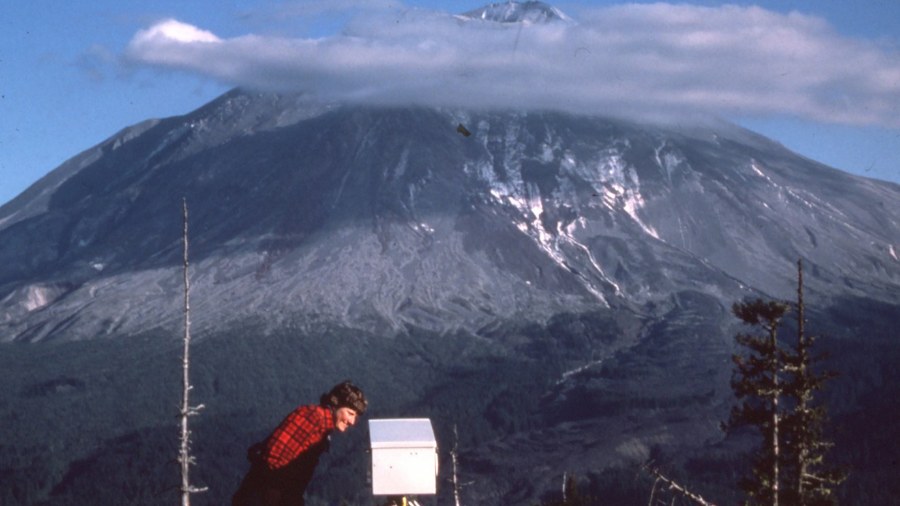Kids came from miles around to ‘cruise Colby’ in 1960s Everett
Mar 11, 2020, 7:10 AM | Updated: Mar 18, 2020, 10:25 am
In this age of ridesharing apps and light rail, a social scene built around teenagers in cars driving up and down the streets of Kirkland, Renton, Lake City, Alki, or some other Northwest community seems about as distant a memory as the Oregon Trail.
But Tom King remembers cruising on Colby Avenue in Everett.
King lives in Marysville, and he grew up there. He’s in his mid-60s, and retired from a career as an electrician and a specialist in traffic signals. A few years ago, he was elected to the Marysville City Council.
A few days ago, King sat in the driver’s seat of his pickup truck. It was parked in front of Everett High School on Colby Avenue in downtown Everett, on the northern edge of a part of the city that loomed large for King and his friends a half century ago. Especially on the weekend.
“I went to the original Marysville High School, which is now Marysville Totem Middle School,” King said. “I got my driver’s license in May of 1969 on a Friday, and the first place I headed was up to cruise Colby.”
“We’d head out, and we used to go across Highway 99, or we called it ‘The Flats,’” King said. “You knew you were from Marysville if you called [that stretch of old highway] ‘The Flats,’ and that’s before I-5 was finished.”
King, and sometimes as many as four of his friends, would pack into his 1964 Ford Falcon, buy a few dollars worth of 28-cents-a-gallon gas and leave the confines of Marysville for Everett and “cruising Colby.”
“Usually what we did was, we stopped at Herfy’s Drive-In, which was down here on 21st and Broadway,” King said, pointing out that the Broadway Herfy’s is long-gone and has been replaced by a teriyaki restaurant. “You’d get a Herfy Heftyburger, and then you’d head up here to Colby.”
Then what?
“You’d drive from the high school south down to the old Greyhound bus station, turn around, and come back,” King said.
And that’s all there was to it; the cruising route on Colby Avenue was roughly six blocks each way, from 25th Street at the north end to Pacific Avenue on the south.
But, as King explains, it wasn’t about the pavement and traffic signals, or even the iconic theaters and department stores on this stretch of Colby.
King put the truck in gear and pulled away from the curb. He headed south on Colby, explaining a bit more what cruising was all about and how the social part of the process worked, or, at least how it was supposed to work.
“We’d just kind of drive along here about you know, 15, 20 miles-an-hour, and there were two lanes in each direction,” King said, pointing to the now two-lane street with diagonally parked cars lining each side. “And of course, when you stopped at the stoplight, it would be an opportune time to usually try to talk to somebody, or pick up girls.”
Was Tom King ever successful “picking up girls” while cruising Colby?
“Yeah, I guess, you know, sort of,” he said, sounding somewhat sheepish. Or maybe he was being modest?
“I’m being sincere,” he said, sort of half sighing and chuckling. “My late wife used to ask me about that occasionally. She’d say, ‘Well, who did you meet up there on Colby?’ and I’d say, ‘Well, I can’t remember their names now.’”
By this time, King’s sigh-chuckle had turned into a belly laugh.
Cruising was a thing on Colby and communities around the United States that likely began sometime in the 1950s, when America’s car culture was being embraced by baby boomers. Tom says his brother, who’s 11 years older, took part in the Eisenhower-era action on Colby back then.
That earlier iteration of cruising, Tom King says, is accurately depicted in the 1973 George Lucas film American Graffiti. He says he watches the movie, which is set in Northern California in 1962, at least once a year. As King drove Colby the other day, the soundtrack of early rock and roll radio hits from the movie – which helps propel the action in the film – was playing on the stereo in his truck.
And it was music from local radio stations – in American Graffiti and in real-life around Puget Sound – that played a big role in connecting all those kids cruising in their cars on Colby in Everett or on other cruising streets around the Northwest.
“We listened to KJR AM, ‘Channel 95,’” said King, imitating part of the famous melodic jingle of the Seattle station from its years as a music powerhouse in the 1960s. “It was a Top 40 radio station, and there was also KOL in Seattle. I think most of my friends listened to KJR. It was more the mainstream Top 40 … [they played] Creedence Clearwater, the Beatles, the Beach Boys. KOL leaned more towards the Stones, the Doors … a little heavier music,” King said.
Before he got his driver’s license and his ’64 Ford Falcon, Tom King and other kids learned to depend on their radios for entertainment while working grueling summer jobs in Snohomish County.
“When I was a kid, we’d listen to Pat O’Day when he had the afternoon slot from 2:00 to 6:00 on KJR. Everybody always had a transistor radio, and you’d have it tuned in to KJR,” King said. “And that’s how you made it through the day of picking strawberries out in the rain or the sun.”
Legendary DJ and concert promoter Pat O’Day is in his 80s now, and is universally regarded as the elder statesman of Northwest radio history. Reached by phone earlier this week where he lives on San Juan Island, O’Day made it clear that he knew that people like Tom King were out there decades ago listening to him on KJR.
“I have a formula that has guided me through my broadcast years, and that is when I look in the microphone, I see one person and I talk directly to them,” O’Day said, his trademark lilt sounding no less engaging though a bit more gravelly than it does on the precious few tapes that exist of his vintage broadcasts.
In his heyday, often more than an astounding one-third of all radios in King, Pierce, and Snohomish County were tuned to O’Day on KJR.
And what about those cruisers like Tom King who were listening while they made the rounds on Colby?
“I thought about those guys in their cars, in their Ford Thunderbirds and their Chevy Camaros and talked directly to them and also, you know, we played music directly to them, up-tempo happy love songs,” O’Day said.
O’Day says, essentially, that without this kind of thoughtfulness and real, organic humanity of an earlier era, contemporary music stations are missing the one thing that used to set radio apart.
“Radio is either companionship or it’s nothing,” O’Day said, lamenting without any trace of bitterness that with modern music stations run by robotic software “[t]here’s nobody behind the microphone thinking or caring about you to make you laugh or cry, or to give you the news, or even give you the time.”
Though there was no texting or social media in the shared heyday of music radio and cruising, to hear Tom King describe being a listener and to hear Pat O’Day describe being a DJ, it’s clear that there was a dialogue taking place between the two parties, if only through the ether.
The live and local DJ and the listeners were in touch with each other across the airwaves, and not just when somebody dialed the radio station’s telephone request line.
But as radio surely morphed over the decades, cruising on Colby changed as well. It got to be a nuisance by the late 1970s, with growing complaints of drinking, littering, noise and other intergenerational irritations (as well as the occasional violent crime).
Everett adopted strict anti-cruising laws around 1980 and the cruisers eventually went away. Over the next decade or so, similar stories played out in Lake City, Alki, Renton, and Kirkland. One way or another, cruising as a social activity died out and kids headed to the mall or their laptops or phones. Other than a few nostalgic events each year sponsored by local car clubs, cruising on Colby and elsewhere has lost its “thing” status.
Back on Colby Avenue circa March 2020, Tom King steered his truck north across Everett Avenue and mentioned a few of the people he once cruised with who are still in touch. Then he tried to explain why driving back and forth all those years ago was such an appealing way to spend an evening.
“It was combination of the freedom of having a car, and everybody else’s company, enjoying other people’s cars, listening to the music, and trying to sometimes to pick up a girl,” King said. “It was just kind of an experience, you know, it was a Friday and a Saturday night. You might have a date on one night. It was coming up here, school was over for the week, and it was just a place to go where it didn’t really cost anything other than, of course, gas, but it was here, and you didn’t get in trouble.”
“It kind of brought everybody together,” King said. “I mean, it was kind of a common bond.”
If you have memories of cruising on Colby Avenue in Everett or in other parts of the Northwest, please share in the comments.
You can hear Feliks every Wednesday and Friday morning on Seattle’s Morning News and read more from him here. If you have a story idea, please email Feliks here.



